How to Grow Soursop: A Guide to Cultivating This Tropical Delight
- March 1, 2024
- 0 comment
Soursop, scientifically known as Annona muricata, is a tropical fruit famous for its unique flavor and potential health benefits. Often used in beverages, ice creams, and other sweet treats, it’s a sought-after fruit for garden enthusiasts in tropical and subtropical regions. Growing soursop can be a rewarding endeavor, and this guide will provide step-by-step instructions on how to cultivate this exotic fruit successfully.

Nutritional Benefits of Soursop
| Benefit | Description |
|---|---|
| Rich in Nutrients | Soursop is high in vitamin C, vitamin B, and several antioxidants, which help boost immunity and overall health. |
| Antioxidant Properties | Contains compounds like luteolin, quercetin, and tangeretin which have antioxidant properties, helping to fight free radicals in the body. |
| Anti-inflammatory Effects | The fruit has anti-inflammatory properties, which can help reduce pain and inflammation in conditions like arthritis. |
| May Have Anticancer Potential | Some laboratory studies suggest that soursop can inhibit the growth of cancer cells, although more research is needed in this area. |
| Supports Heart Health | High in potassium, soursop can help lower blood pressure levels and maintain a healthy heart. |
| Improves Digestive Health | Rich in fiber, it aids in digestion and can prevent constipation. |
| May Help Regulate Blood Sugar Levels | Preliminary studies indicate that soursop can help regulate blood sugar levels, beneficial for people with diabetes. |
| Boosts Eye Health | Contains antioxidants like vitamin C, vitamin E, and beta-carotene which are beneficial for eye health. |
| Enhances Endurance and Energy Levels | The B vitamins in soursop help in enhancing energy levels and improving endurance. |
| Skin and Hair Health | Vitamin C and antioxidants present in soursop are beneficial for skin and hair, promoting a healthy complexion and strong hair. |
Before diving into cultivation, it’s essential to understand the soursop plant. Native to the American tropics, soursop trees thrive in warm, humid environments. They can grow up to 30 feet tall, producing large, green, spiky fruits. The inside of the fruit is soft, fibrous, and white with a sweet-sour taste.
List on How To Grow Soursop Fruit
- Selecting a Suitable Location
- Planting the Soursop Tree
- Watering and Mulching
- Fertilization and Pruning
- Harvesting the Fruit
- Pest and Disease Management
Selecting a Suitable Location
Soursop trees need a location that receives ample sunlight and has well-draining soil. Avoid areas prone to flooding or standing water. The ideal temperature range for soursop is between 75°F and 85°F, with high humidity levels. Protection from strong winds is also necessary as the tree can be susceptible to damage.
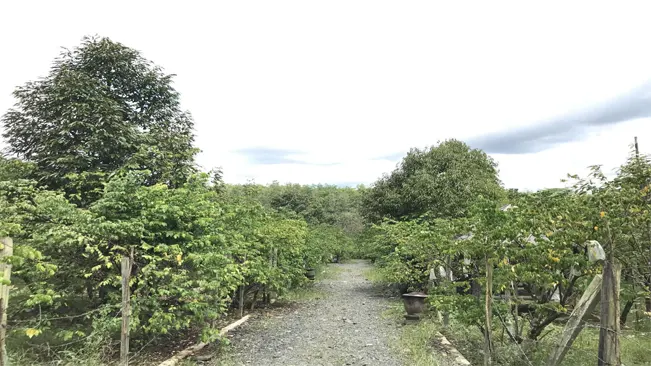
Importance of Sunlight
- Soursop trees thrive in full sunlight, requiring at least 6-8 hours of direct sunlight daily. Adequate sunlight is crucial for the tree’s growth, fruit production, and overall health. Locations that are too shaded can lead to poor growth and lower fruit yield.
Soil Requirements
- The ideal soil for soursop trees should be rich, well-draining, and slightly acidic to neutral in pH (around 5.5 to 6.5). Good drainage is essential to prevent waterlogging, which can cause root rot. If your soil is heavy or clayey, consider amending it with organic matter like compost or peat moss to improve drainage. Raised beds or planting on a slope can also help ensure proper drainage.
Temperature and Humidity
- Soursop trees are tropical plants and thus prefer a warm, humid climate. The ideal temperature range is between 75°F and 85°F (24°C to 29°C). These trees are sensitive to cold and can be damaged by temperatures below 40°F (4°C). In areas with cooler climates, soursop can be grown in a greenhouse or indoors if sufficient light is provided.
Protection from Wind
- Soursop trees, particularly when young, can be susceptible to wind damage. High winds can break branches and disturb the tree’s root system. If you live in a windy area, consider planting your soursop tree near a windbreak, such as a fence, wall, or other trees. This not only protects the tree but can also create a microclimate with higher humidity, which soursop trees enjoy.
Proximity to Other Plants
- When selecting a location, consider the tree’s mature size – soursop trees can grow quite large (up to 30 feet tall and wide). Ensure there’s enough space for the tree to grow without competing with other plants for nutrients, water, and sunlight. Also, consider its proximity to buildings and power lines, as its roots and branches can interfere with these structures.
Accessibility for Care and Harvest
- Finally, choose a location that allows easy access for regular care, including watering, pruning, and harvesting. Soursop fruits are large and heavy, and harvesting them requires you to reach the higher branches, so ease of access is important.
Planting the Soursop Tree
You can start a soursop tree from seeds or buy a young tree from a nursery. If you’re planting seeds, dry them for a few days before planting. Plant them in a soil mix and keep them moist until they germinate. For nursery saplings, plant them in a hole twice the size of the root ball, and ensure you don’t bury the stem too deep.
Planting Soursop from Seeds

- Seed Selection and Preparation
- Select fresh, healthy soursop seeds from a ripe fruit.
- Wash the seeds to remove pulp, which can contain substances inhibiting germination.
- Dry the seeds for a few days in a shaded, well-ventilated area but avoid direct sunlight which can damage them.
- Germination Process
- Sow the seeds in a germination tray or small pots filled with a well-draining soil mix. A mix of peat, perlite, and vermiculite is often recommended.
- Plant the seeds about 1 inch deep and gently cover them with soil.
- Keep the soil consistently moist but not waterlogged. Using a spray bottle for watering can prevent disturbing the seeds.
- Germination typically occurs in 15-30 days, depending on the temperature and humidity.
- Seedling Care
- Once germinated, keep the seedlings in a warm, well-lit area but avoid direct, harsh sunlight.
- Transplant the seedlings to larger pots when they are a few inches tall and have a few true leaves.
Planting Nursery Saplings
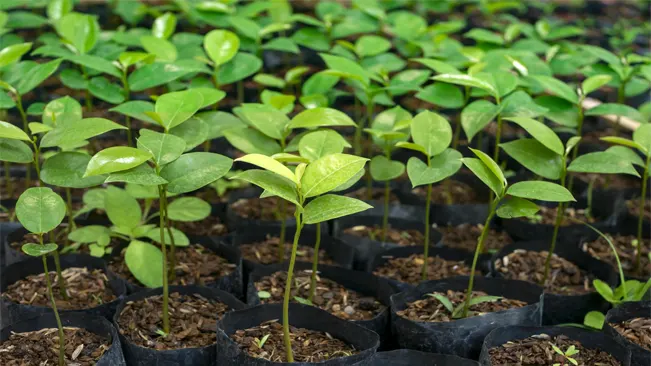
- Choosing a Sapling
- Select a healthy sapling from a reputable nursery. Look for a tree that is free from pests and diseases, with vibrant leaves.
- Site Preparation
- Choose a sunny spot with well-draining soil.
- Ensure the site is protected from strong winds and not prone to flooding.
- Planting the Sapling
- Dig a hole that is twice as wide and as deep as the root ball of the sapling.
- Place the sapling in the hole, ensuring that it is at the same depth as it was in the pot. It’s crucial not to bury the stem too deep as this can cause stem rot.
- Fill the hole with soil and gently tamp around the base to remove air pockets.
- Water the sapling thoroughly after planting.
- Aftercare
- Regular watering is essential, especially in the first few weeks after planting. The goal is to keep the soil moist but not waterlogged.
- Mulch around the base of the tree with organic material to help retain soil moisture and reduce weed growth.
- Stake the tree if necessary to provide support, especially in windy areas.
Watering and Mulching
Regular watering is crucial, especially during the early stages of growth and in dry periods. However, avoid overwatering as it can lead to root rot. Mulching with organic matter can help retain soil moisture and regulate soil temperature.
Watering Soursop Trees
- Watering Frequency: The frequency of watering soursop trees largely depends on the climate, season, and soil type. In general, young trees require more frequent watering to establish their root systems. In hot and dry climates, more frequent watering is necessary. However, in cooler or more humid climates, the frequency can be reduced.
- Amount of Water: The amount of water needed per watering session varies. A good rule of thumb is to water deeply enough to moisten the soil to a depth of at least 6 inches. This encourages deeper root growth, which is beneficial for the tree’s overall health and stability.
- Signs of Overwatering and Underwatering: Overwatering can lead to root rot, characterized by yellowing leaves and a general decline in health. Underwatered trees may show signs such as wilting, dry leaves, and stunted growth. It’s important to strike a balance and adjust watering based on the tree’s response.
- Best Time to Water: The best time to water soursop trees is early in the morning or late in the afternoon. This reduces water loss due to evaporation and allows the water to seep deeply into the soil.
Mulching Soursop Trees
- Benefits of Mulching: Mulching serves several purposes. It helps retain soil moisture, reduces weed growth, and can improve soil quality as organic mulches decompose. Mulch also helps regulate soil temperature, keeping it warmer in cool weather and cooler in hot weather.
- Types of Mulch: Organic mulches like wood chips, straw, grass clippings, or decomposed leaves are ideal for soursop trees. These materials break down over time, adding nutrients back into the soil.
- How to Apply Mulch: Spread the mulch around the base of the tree, extending it out to the drip line (the area directly beneath the outer circumference of the tree branches). The mulch layer should be about 2-4 inches thick. Avoid piling mulch against the tree trunk as this can cause moisture to accumulate and lead to trunk rot.
- When to Mulch: Mulching can be done at any time of the year, but it’s particularly beneficial during the planting stage and before the onset of hot or cold extremes in weather.
Fertilization and Pruning
Fertilize your soursop tree with a balanced, slow-release fertilizer. Young trees benefit from more frequent fertilization. Pruning is essential to remove dead or diseased branches and to shape the tree for better air circulation and sunlight exposure.
Fertilization
- Type of Fertilizer: Use a balanced, slow-release fertilizer that contains equal parts of nitrogen, phosphorus, and potassium (NPK). Sometimes, a fertilizer with slightly higher nitrogen content can be beneficial during the early growth stages.
- Frequency of Application: Young soursop trees, particularly in their first 2-3 years, benefit from more frequent fertilization. They can be fertilized every 2-3 months. As the tree matures, reduce the frequency to about twice a year.
- Application Method: Apply the fertilizer around the base of the tree, extending out to the drip line (the area directly beneath the outer circumference of the tree branches). Be careful not to apply it too close to the trunk to avoid root burn.
- Monitoring and Adjustments: Observe your tree’s response to fertilization. Signs of good health include robust leaf growth and healthy fruit production. Adjust the fertilization schedule and quantity based on the tree’s performance and the specific conditions of your soil.
Pruning
Pruning is vital for maintaining the health and productivity of your soursop tree:
- Timing: The best time to prune a soursop tree is during its dormant period, typically late winter or early spring before new growth begins.
- Objective: The primary goals of pruning are to remove dead or diseased branches, to allow for better air circulation within the canopy, and to ensure adequate sunlight penetration to all parts of the tree.
- Technique:
- Start by removing any dead, damaged, or diseased branches.
- Thin out crowded branches to improve air circulation.
- Cut back overly vigorous branches that are shading lower parts of the tree.
- Shape the tree, if desired, but avoid heavy pruning as this can stress the tree and reduce fruit production.
- Tools: Use sharp, clean pruning tools. Smaller branches can be pruned with hand pruners, while larger limbs may require loppers or a saw. Always make clean cuts at a 45-degree angle to prevent water accumulation and potential disease.
- Post-Pruning Care: After pruning, it’s a good practice to clean up any fallen debris and apply a fresh layer of mulch around the base of the tree. This helps to protect the roots and maintain soil moisture.
Harvesting the Fruit
Soursop fruits are typically ready to harvest when they are slightly soft to the touch and light green. The fruit should be cut from the tree with a bit of the stem attached and allowed to ripen for a few days before consumption.
Identifying Ripeness
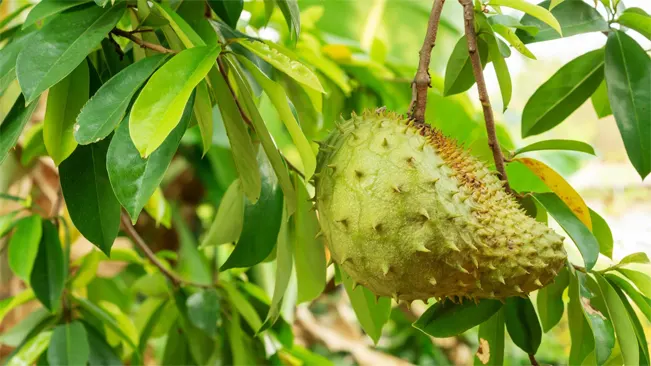
- Visual and Tactile Indicators: The key to harvesting soursop is determining when the fruit is ripe. A ripe soursop fruit will have a slight give when pressed gently, indicating softness. The color of the fruit shifts from dark green to a lighter green, and you may notice a slight yellowing in some areas. Additionally, the spiky skin becomes less rigid and more pliable.
- Fragrance: As the fruit ripens, it emits a sweet, tropical aroma which can be a useful indicator of readiness for harvesting.
Timing of Harvest

- Seasonal Considerations: The exact timing for harvesting can vary based on your geographic location and climate. Soursop typically ripens in the warmer months, but in tropical climates, it may produce fruit year-round.
- Monitoring Progress: Start checking for ripeness as the fruit grows larger and changes color. Regular observation is crucial as the window for perfect ripeness can be short.
Harvesting Technique
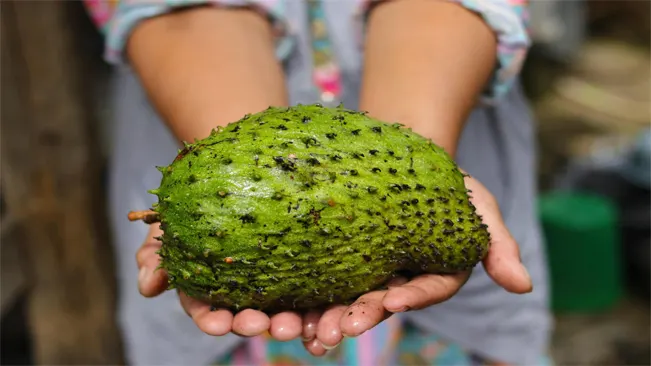
- Using Pruning Shears: It’s important to use a clean and sharp pair of pruning shears or a knife. The fruit should be cut from the tree, leaving a few inches of the stem attached. This helps in handling the fruit and reduces the risk of damage to the remaining branch and nearby fruits.
- Handling With Care: Soursop fruit is delicate when ripe. Handle it gently to avoid bruising. Bruised areas can deteriorate quickly and affect the quality of the fruit.
Post-Harvest Ripening

- Ripening Off the Tree: After harvesting, soursop may need a few days to ripen fully. Place it in a well-ventilated area at room temperature. Avoid direct sunlight which can overripen or spoil the fruit.
- Checking for Full Ripeness: A fully ripe soursop will be soft all over. The skin may darken slightly, and the aroma will become more pronounced. It’s best consumed or processed immediately at this stage.
Storage and Consumption
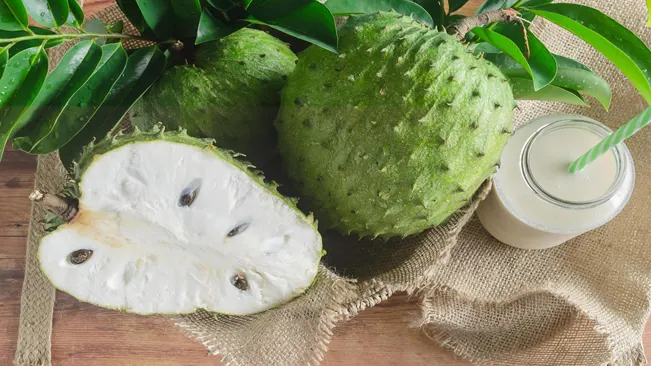
- Short Shelf Life: Once ripe, soursop fruit has a relatively short shelf life. It should be consumed or processed within a day or two of reaching full ripeness.
- Refrigeration: If you cannot consume the fruit immediately, store it in the refrigerator. This can extend its life a few days, but be aware that the texture and flavor may change slightly.
- Preparation for Eating: To eat, the fruit is typically cut open, and the creamy, fibrous flesh is scooped out. The large, black seeds inside are not edible and should be discarded.
Pest and Disease Management
Soursop trees can be prone to pests like mealybugs and diseases like root rot. Regular inspection and organic pest control methods are recommended. Proper air circulation and avoiding waterlogged soil can prevent most diseases.
Pest Management
- Mealybugs: These small, soft-bodied insects are covered with a white, waxy substance and can be found in clusters. They suck the sap from the leaves and stems, weakening the tree and potentially leading to leaf drop and stunted growth.
- Control: You can physically remove mealybugs using a strong water jet or by wiping them off with a cloth soaked in soapy water. For more severe infestations, use neem oil or insecticidal soap, which are effective organic options.
- Scale Insects: Similar to mealybugs, these pests also suck sap from the leaves, stems, and sometimes fruits. They appear as small bumps on the plant parts and can cause yellowing of leaves and reduced vigor of the tree.
- Control: Scales can be scraped off manually or treated with horticultural oil, neem oil, or insecticidal soap.
Disease Management
- Root Rot: This is commonly caused by overwatering, leading to a lack of oxygen in the soil and the growth of fungi that attack and decay the roots.
- Prevention and Control: Ensure good drainage in the soil and avoid overwatering. If root rot is suspected, reduce watering and consider applying a fungicide specifically designed for root rot. In severe cases, you may need to remove and destroy the affected parts of the tree.
- Anthracnose: This fungal disease causes dark, sunken lesions on fruits, leaves, and young shoots. It can lead to significant fruit drop and reduced yield.
- Control: Prune affected areas to improve air circulation. Apply copper-based fungicides or organic options like neem oil as preventive measures, especially during humid or wet weather.
- Leaf Spot: Various fungi can cause leaf spot diseases, which present as spots on the leaves that can lead to defoliation and reduced tree health.
- Control: Remove and destroy affected leaves to prevent the spread of the disease. Apply fungicides if necessary, and ensure the tree has proper spacing and pruning to improve air circulation.
General Tips for Pest and Disease Management
- Regular Inspection: Regularly check your soursop tree for signs of pests and diseases. Early detection is key to effective management.
- Cultural Practices: Maintain a healthy tree through proper watering, fertilization, and pruning practices. A healthy tree is less susceptible to pests and diseases.
- Organic Control Methods: Use organic treatments as a first line of defense. Chemicals should be a last resort and used judiciously to avoid harming beneficial insects and the environment.
- Air Circulation and Sunlight: Ensure your soursop tree is planted in an area with good air circulation and receives adequate sunlight. This reduces the likelihood of fungal diseases.
Conclusion
Growing soursop fruit can be a delightful experience for any gardening enthusiast. By providing the right conditions and care, you can enjoy the unique taste and potential health benefits of this exotic fruit right from your backyard. Remember, patience and consistent care are key to cultivating a thriving soursop tree.
FAQs (Frequently Asked Questions)
- What climate is best for growing soursop?
- Soursop thrives in warm, humid tropical and subtropical climates. It prefers temperatures between 75°F and 85°F (24°C to 29°C) and high humidity.
- Soursop thrives in warm, humid tropical and subtropical climates. It prefers temperatures between 75°F and 85°F (24°C to 29°C) and high humidity.
- Can I grow soursop from seeds?
- Yes, soursop can be grown from seeds. Dry the seeds for a few days before planting and keep them in moist soil until germination, which typically takes around 15-30 days.
- Yes, soursop can be grown from seeds. Dry the seeds for a few days before planting and keep them in moist soil until germination, which typically takes around 15-30 days.
- How long does it take for a soursop tree to bear fruit?
- A soursop tree grown from seed can take 3-5 years to start bearing fruit. Grafted or budded trees may bear fruit sooner, typically in 2-3 years.
- A soursop tree grown from seed can take 3-5 years to start bearing fruit. Grafted or budded trees may bear fruit sooner, typically in 2-3 years.
- What type of soil is best for soursop trees?
- Soursop trees prefer well-draining soil with a pH between 5.5 and 6.5. They are tolerant of different soil types but avoid heavy clay or very sandy soils.
- Soursop trees prefer well-draining soil with a pH between 5.5 and 6.5. They are tolerant of different soil types but avoid heavy clay or very sandy soils.
- How much water does a soursop tree need?
- Regular watering is important, especially in dry periods. However, avoid overwatering as it can lead to root rot. The soil should be kept moist but not waterlogged.
- Regular watering is important, especially in dry periods. However, avoid overwatering as it can lead to root rot. The soil should be kept moist but not waterlogged.
- Do I need to fertilize my soursop tree?
- Yes, fertilizing helps promote healthy growth. Use a balanced, slow-release fertilizer and apply it during the growing season. Young trees benefit from more frequent fertilization.
- Yes, fertilizing helps promote healthy growth. Use a balanced, slow-release fertilizer and apply it during the growing season. Young trees benefit from more frequent fertilization.
- How much sunlight does a soursop tree need?
- Soursop trees require full sun for optimal growth. They should receive at least 6-8 hours of direct sunlight daily.
- Soursop trees require full sun for optimal growth. They should receive at least 6-8 hours of direct sunlight daily.
- How do I prune a soursop tree?
- Prune to remove dead or diseased branches, to shape the tree, and to allow better air circulation and sunlight penetration. Pruning is usually done during the tree’s dormant period.
- Prune to remove dead or diseased branches, to shape the tree, and to allow better air circulation and sunlight penetration. Pruning is usually done during the tree’s dormant period.
- What pests and diseases commonly affect soursop trees?
- Common pests include mealybugs and scale insects. Diseases like root rot and anthracnose can also affect soursop trees. Regular monitoring and organic control methods are recommended.
- Common pests include mealybugs and scale insects. Diseases like root rot and anthracnose can also affect soursop trees. Regular monitoring and organic control methods are recommended.
- When and how do I harvest soursop fruit?
- Soursop fruits are ready to harvest when they are slightly soft and light green. Use a pair of pruning shears to cut the fruit with a bit of stem attached. Allow the fruit to ripen for a few days before consuming.

Kristine Moore
Forestry AuthorI'm Kristine Moore, a seasoned garden landscaping professional with over 30 years of experience. My extensive career has been dedicated to transforming outdoor spaces into stunning, sustainable landscapes. With a deep understanding of horticulture, design principles, and environmental stewardship, I have become a respected figure in the field, known for creating harmonious, visually appealing, and eco-friendly gardens. My commitment to excellence and continuous learning in landscaping trends and techniques has solidified my reputation as an expert in garden design and implementation.







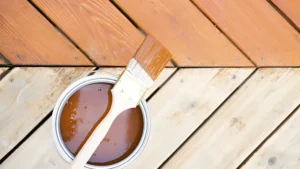




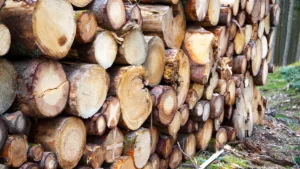
Leave your comment